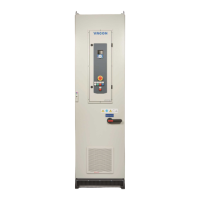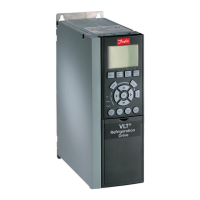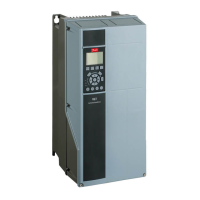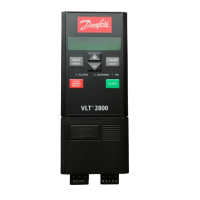
Do you have a question about the Danfoss VACON 100 FLOW Series and is the answer not in the manual?
Explains the scope and target audience of the application guide for configuring and operating the AC drive.
Provides instructions on how to interpret parameter tables, explaining each column's meaning.
Outlines the various functions of the AC drive, including easy setup, navigation, motor control, PID control, and pump control.
Offers a concise guide for the initial setup and application selection of the AC drive, including a warning about accidental starts.
Describes the control panel's role as the interface for motor control and status monitoring, including keypad layout.
Explains how to navigate the AC drive's menus and submenus using keypad buttons and describes the display of the current location.
Discusses how to interact with parameters using the graphical display.
Covers how the text display interface operates.
Explains how to use parameter P1.2 to select an application, which sets preset parameter groups.
Explains the PID control application for processes where process variable is controlled via motor speed, using one setpoint and feedback.
Details the Multi-pump (single drive) application for systems with up to 8 parallel motors, configured for 3 motors by default.
Describes the Multi-pump (Multidrive) application for systems with up to 8 parallel motors, using Modbus RTU communication.
Introduces wizards that help set basic application-related parameters.
Introduces wizards for specific drive functions.
Describes the Monitor Menu's purpose for viewing and customizing drive parameters and signals.
Explains the Multimonitor function for viewing multiple parameters and signals simultaneously.
Introduces the Trend Curve feature for graphical monitoring of two values over time.
Describes basic monitoring of standard I/O board statuses.
Details monitoring of I/O signals, including digital and analog inputs and outputs.
Lists parameters for monitoring Multi-pump systems, including motor running status, autochange, and operate mode.
Covers parameters related to motor nameplate data and control settings, essential for drive configuration.
Details parameters for configuring the drive's start and stop behavior, including control places and logic.
Covers parameters for setting frequency references from various sources like keypad, I/O, fieldbus, and PID.
Details parameters for setting acceleration and deceleration ramps, start magnetization, DC braking, and flux braking.
Explains how to configure digital and analog inputs and outputs, including default functions.
Details parameters for various protection functions like external faults, phase faults, and motor thermal protections.
Covers basic settings for the PID controller, including gain, integration time, and process unit selection.
Covers parameters for Multi-pump systems, including mode, number of pumps, interlocks, and autochange settings.
Use this parameter to select the application configuration for the drive, setting preset parameters.
Covers parameters related to motor nameplate data and control settings, essential for drive configuration.
Details parameters for configuring the drive's start and stop behavior, including control places and logic.
Covers parameters for setting frequency references from various sources like keypad, I/O, fieldbus, and PID.
Explains how to configure digital and analog inputs and outputs, including default functions.
Details parameters for various protection functions like external faults, phase faults, and motor thermal protections.
Covers basic settings for the PID controller, including gain, integration time, and process unit selection.
Explains the Multi-pump function for controlling multiple motors, including configuration and modes.
Categorizes fault notifications into info, alarm, and fault types, explaining their impact and reset procedures.
Explains the interpretation of alarm and warning color codes and their relation to condition-based monitoring stages.
Lists common fault codes, their causes, and troubleshooting steps for hardware and software issues.
Addresses overcurrent faults due to high motor cable current, short circuits, or incorrect parameters, providing troubleshooting steps.
Details earth faults caused by insulation malfunction in motor windings or cables, recommending checks on motor, cables, and filters.
Explains undervoltage faults caused by low supply voltage or defective components, providing troubleshooting steps.
Details AC drive overtemperature faults, recommending checks on cooling air, heatsink, ambient temperature, and fan.
Addresses motor stall faults when the motor stops, recommending checks on the motor and load.
Explains motor underload faults due to insufficient load, recommending checks on load, parameters, and filters.
Covers identification faults due to failures in the identification run, recommending motor connection and start command checks.
Details quick stop faults when the function is activated, recommending finding and correcting the cause.











